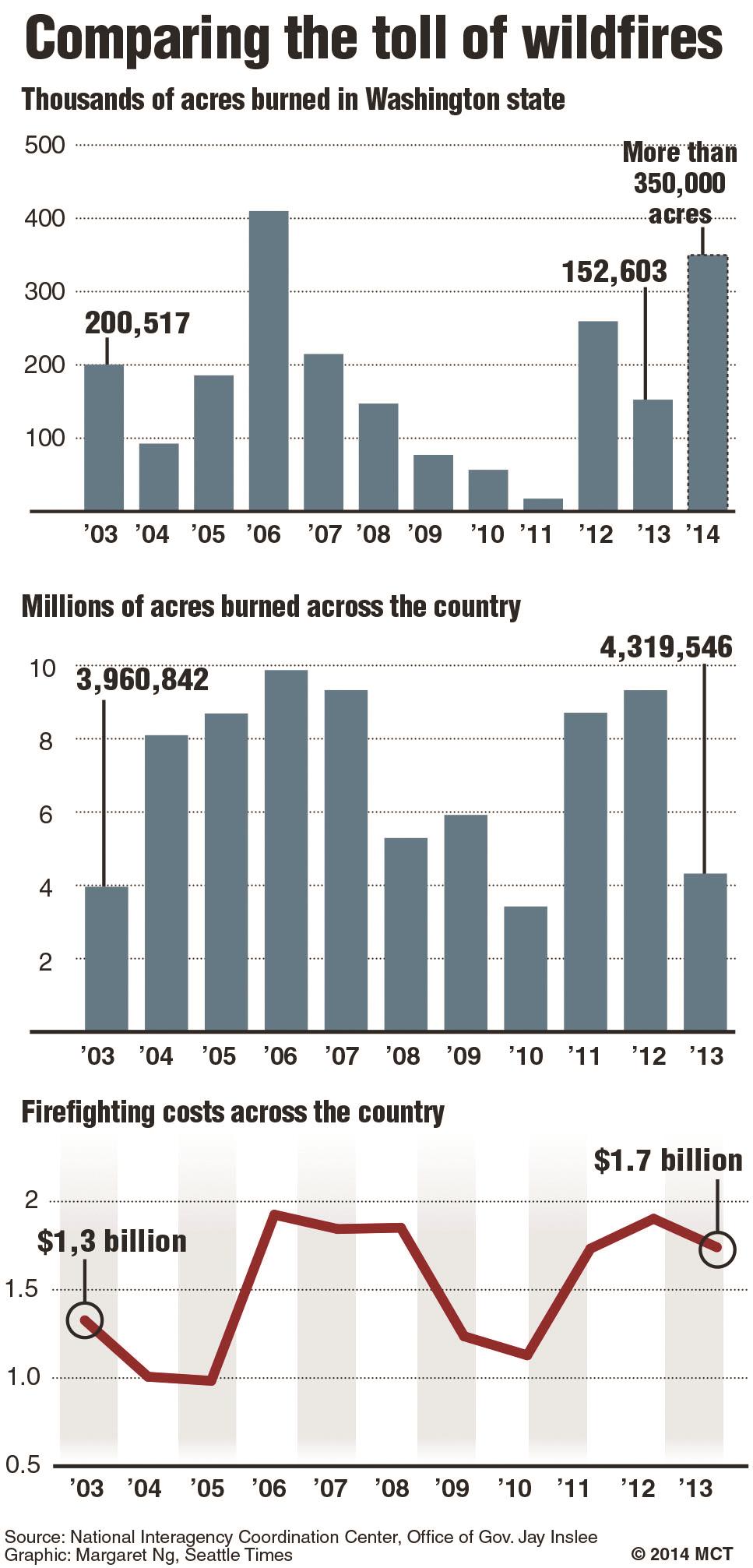Wildfires Are Increasing, But Funds To Battle Them Are Shrinking
 It’s an unsettling trend: Wildfires are becoming larger and more frequent, and money to prevent and fight them continues to be scarce.
It’s an unsettling trend: Wildfires are becoming larger and more frequent, and money to prevent and fight them continues to be scarce.
As wildfires blaze across Washington, state and federal officials are running out of firefighting dollars. That doesn’t mean the firefighters will turn around the engines and head home, leaving the people of Okanogan County or the Colville Indian Reservation on their own. Money gets pulled from other places, often fire-prevention budgets, a practice that for years has limited the thinning of forests that could help fires from spreading.
“The enduring problem is the under-appropriation of firefighting funding and the raid on these other accounts,” says Jim Ogsbury, executive director of the Western Governors’ Association.
As states continue to battle larger and nastier fires, some are beginning to ask: How do we pay to prevent and stop these blazes?
Washington state has already spent $91 million fighting wildfires this summer, according to a request for emergency assistance from Gov. Jay Inslee to the federal government. If approved, federal disaster aid could help people who lost homes and money for damaged roads and debris removal. But it won’t reimburse the state for firefighting costs.
That means that the state’s wildfire-fighting money for the budget year starting in July likely has already run out, according to Mary Verner of the state Department of Natural Resources (DNR). Money needed to fight wildfires between now and next June comes from state reserves unless or until the Legislature approves extra funding, according to Verner.
The average wildfire season in Washington scorches, on average, 70,000 acres. But this year, from the Wenatchee National Forest to across Okanogan County and as far east as Spokane County, fires have torched more than 350,000 acres.
More than 340 homes have been lost to the Carlton complex wildfire, the largest in state recorded history.
It takes manpower and equipment on a military scale to fight these fires: thousands of foot soldiers, plus commanders, planners, cooks, pilots and latrine cleaners.
Just getting the heavy equipment going can fill a ledger. It costs $1,876 to deploy and staff a large four-wheel-drive fire engine for a single day shift, according to state cost guidelines. Bulldozers and excavators to help build fire lines can cost up to $3,448 and $2,252, respectively, for a single shift.
Firefighters and crew workers earn between $14 and $18 an hour, depending on experience. A sawyer with a chain saw will cost $862 a day. And none of this counts the money to keep helicopters and tanker planes aloft to fight fire from the sky, or the logistics staff to run the fire camps.
This article appeared in print on page 3 of edition of Hamodia.
To Read The Full Story
Are you already a subscriber?
Click "Sign In" to log in!

Become a Web Subscriber
Click “Subscribe” below to begin the process of becoming a new subscriber.

Become a Print + Web Subscriber
Click “Subscribe” below to begin the process of becoming a new subscriber.

Renew Print + Web Subscription
Click “Renew Subscription” below to begin the process of renewing your subscription.












